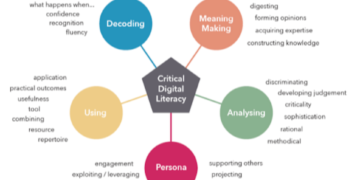OpenCorporates’s database contains information on a large number of companies, including their subsidiaries. It can be used for investigative journalism at scale and has been the backbone of many investigations by organisations like the ICIJ.
The data is gathered from official registers. Each record in the register represents a snapshot of a legal entity. Each event describes a change to this legal entity.

Company data
Opencorporates works to bridge a gap in company data that threatens prosperity and sustainability in society. It is the world’s largest source of open legal-entity data and operates under a set of principles that ensure transparency, quality, and reliability of the data it maintains.
The company’s dataset is based on primary public sources, such as national business registries and the US Securities and Exchange Commission. It
has also partnered with organisations that are committed to the integrity of the information, such as NGOs and journalists.
The organisation’s primary mission is to make official public information about companies more widely available and useful, especially in tackling
the misuse of companies for criminal activities such as money laundering. This is done by collecting, aggregating and structuring information about
corporate ownership and structure around the world. To do this effectively, it relies on a graph database. This is because untangling the web of
relations between companies is very difficult with relational databases.
Director data
OpenCorporates is a project that makes it possible to search millions of companies and their subsidiaries around the world. Its data is sourced from
public records and user submissions. This allows researchers and journalists to track the relationships between corporate parent entities and their
subsidiaries. This information helps identify patterns of corruption and other illicit activities, such as money laundering.
Using a graph database to untangle this web of connections is much more effective than a relational database. Graph databases allow for queries
such as degrees of separation, siblings, up the chain only, and temporal graph search. However, they also come with their own idiosyncrasies.
Taggart explained that the graph database he was using was having trouble delivering these complex queries within reasonable execution times.
The best way to get this data is through the OpenCorporates API. The API is free for use under an Open Data license. It requires an API token, which
can be obtained from your account page on the OpenCorporates website.
Shareholder data
OpenCorporates is building the global map of company data, collecting the world’s official public information and combining it to create a legal
entity dataset fit for the modern, data-driven world. This is a powerful resource for businesses, regulators and NGOs and powers KYC solutions,
anti-corruption investigations and business intelligence.
The organisation has created an API that makes its data available for free and under an open license. It is also available for purchase via a dual
licensing scheme that allows commercial use. The company’s database includes all 51 of the US state-based public company registers, which have
been unified and made accessible online with clear traceability to their original sources.
When using the API, you must use a valid API key and have a subscription. This can be obtained from the OpenCorporates website. When
requesting data, you must specify the datum identifier (or datum URI), the source (e.g., a user-contributed URI, an external URI, or the
OpenCorporates url), and the usage limit of your API plan.
Financial data
OpenCorporates combines data from public open sources, official APIs, and scrapings to provide trusted, primary-source legal entity data. Its platform is used by investigative journalists, corporate forensics specialists, and more. Its data is available for free and can be integrated with other systems to streamline business intelligence and risk analysis.
The company aims to connect the world’s information and make it more accessible, empowering people to drive positive change. To do this, it offers a simple, low-code API for investigating companies at scale. To learn more about the service, check out their knowledge base and data dictionaries.
The website uses sophisticated analytics to map the relationships between different companies registered in multiple jurisdictions, revealing complex networks of ownership. This is important to investors, shareholders, and credit checking. For example, an analysis of the worldwide interests of Barclays reveals a labyrinthine network that stretches 14 companies deep. This is significant to insurers and regulators who are concerned about risk.










































